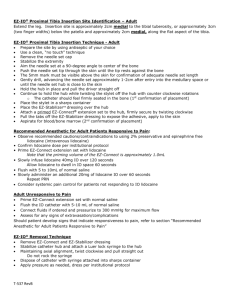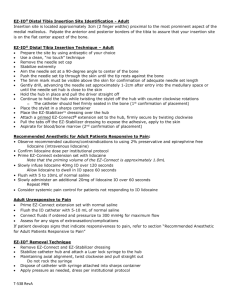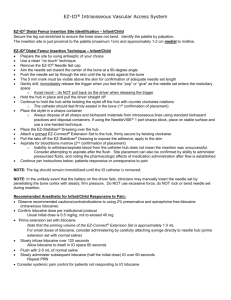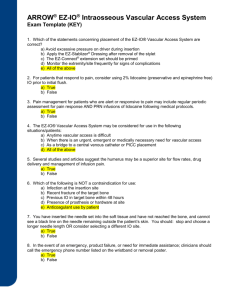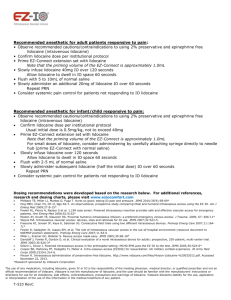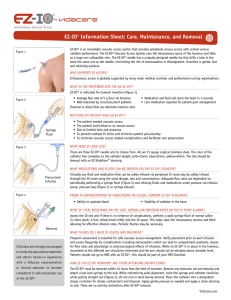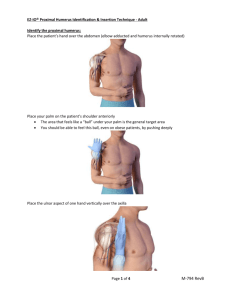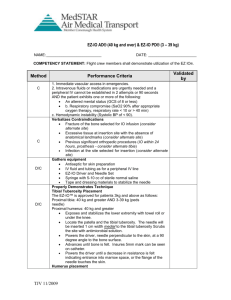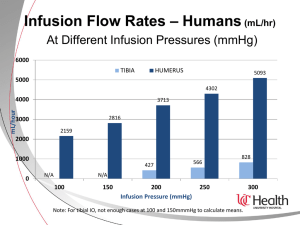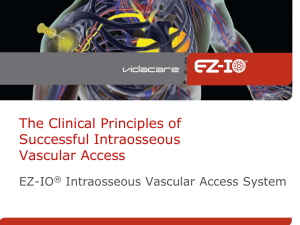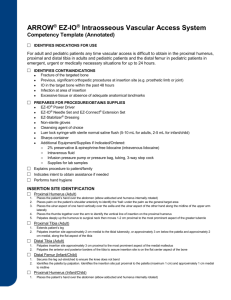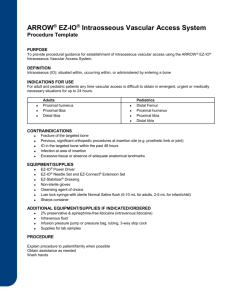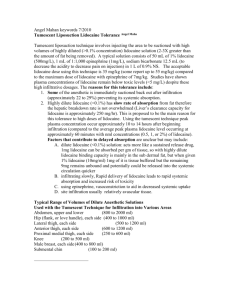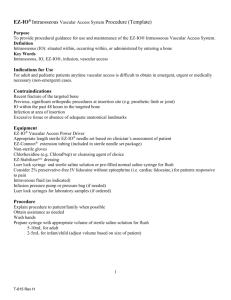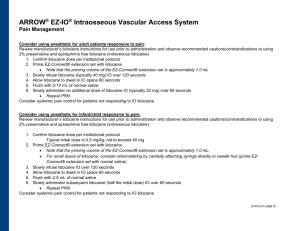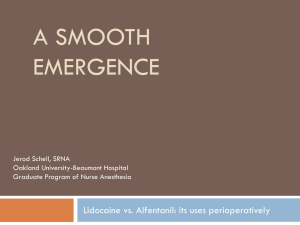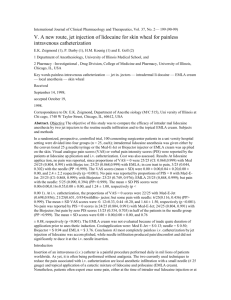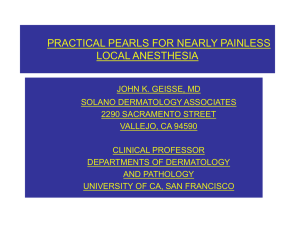Proximal Humerus Site Identification & Insertion Technique (Adult)
advertisement
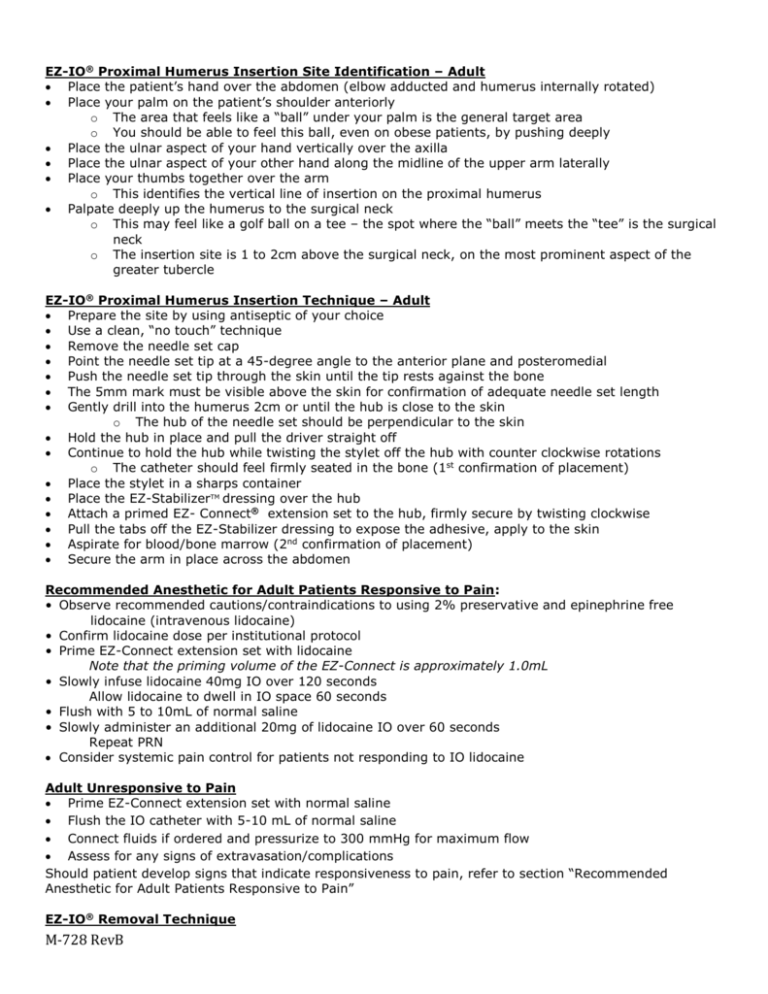
EZ-IO® Proximal Humerus Insertion Site Identification – Adult Place the patient’s hand over the abdomen (elbow adducted and humerus internally rotated) Place your palm on the patient’s shoulder anteriorly o The area that feels like a “ball” under your palm is the general target area o You should be able to feel this ball, even on obese patients, by pushing deeply Place the ulnar aspect of your hand vertically over the axilla Place the ulnar aspect of your other hand along the midline of the upper arm laterally Place your thumbs together over the arm o This identifies the vertical line of insertion on the proximal humerus Palpate deeply up the humerus to the surgical neck o This may feel like a golf ball on a tee – the spot where the “ball” meets the “tee” is the surgical neck o The insertion site is 1 to 2cm above the surgical neck, on the most prominent aspect of the greater tubercle EZ-IO® Proximal Humerus Insertion Technique – Adult Prepare the site by using antiseptic of your choice Use a clean, “no touch” technique Remove the needle set cap Point the needle set tip at a 45-degree angle to the anterior plane and posteromedial Push the needle set tip through the skin until the tip rests against the bone The 5mm mark must be visible above the skin for confirmation of adequate needle set length Gently drill into the humerus 2cm or until the hub is close to the skin o The hub of the needle set should be perpendicular to the skin Hold the hub in place and pull the driver straight off Continue to hold the hub while twisting the stylet off the hub with counter clockwise rotations o The catheter should feel firmly seated in the bone (1st confirmation of placement) Place the stylet in a sharps container Place the EZ-StabilizerTM dressing over the hub Attach a primed EZ- Connect® extension set to the hub, firmly secure by twisting clockwise Pull the tabs off the EZ-Stabilizer dressing to expose the adhesive, apply to the skin Aspirate for blood/bone marrow (2nd confirmation of placement) Secure the arm in place across the abdomen Recommended Anesthetic for Adult Patients Responsive to Pain: • Observe recommended cautions/contraindications to using 2% preservative and epinephrine free lidocaine (intravenous lidocaine) • Confirm lidocaine dose per institutional protocol • Prime EZ-Connect extension set with lidocaine Note that the priming volume of the EZ-Connect is approximately 1.0mL • Slowly infuse lidocaine 40mg IO over 120 seconds Allow lidocaine to dwell in IO space 60 seconds • Flush with 5 to 10mL of normal saline • Slowly administer an additional 20mg of lidocaine IO over 60 seconds Repeat PRN Consider systemic pain control for patients not responding to IO lidocaine Adult Unresponsive to Pain Prime EZ-Connect extension set with normal saline Flush the IO catheter with 5-10 mL of normal saline Connect fluids if ordered and pressurize to 300 mmHg for maximum flow Assess for any signs of extravasation/complications Should patient develop signs that indicate responsiveness to pain, refer to section “Recommended Anesthetic for Adult Patients Responsive to Pain” EZ-IO® Removal Technique M-728 RevB Remove EZ-Connect and EZ-Stabilizer dressing Stabilize catheter hub and attach a Luer lock syringe to the hub Maintaining axial alignment, twist clockwise and pull straight out Do not rock the syringe Dispose of catheter with syringe attached into sharps container Apply pressure as needed, dress per institutional protocol Lidocaine dosing recommendations were developed based on the research below. For additional references, research and dosing charts, please visit www.eziocomfort.com Philbeck TE, Miller LJ, Montez D, Puga T. Hurts so good; easing IO pain and pressure. JEMS 2010;35(9):58-69* Ong MEH, Chan YH, Oh JJ, Ngo AS-Y. An observational, prospective study comparing tibial and humeral intraosseous access using the EZ-IO. Am J Emerg Med 2009;27:8-15* Fowler RL, Pierce A, Nazeer S et al. 1,199 case series: Powered intraosseous insertion provides safe and effective vascular access for emergency patients. Ann Emerg Med 2008;52:S152* Paxton JH, Knuth TE, Klausner HA. Proximal humerus intraosseous infusion: a preferred emergency venous access. J Trauma. 2009; 67: 606-11* Wayne MA. Intraosseous vascular access: devices, sites and rationale for IO use. JEMS 2007;32:S23-5. Frascone RJ, Jensen JP, Kaye K, Salzman JG. Consecutive field trials using two different intraosseous devices. Prehosp Emerg Care 2007;11:164-71* Fowler R, Gallagher JV, Isaacs SM, et al. The role of intraosseous vascular access in the out-of-hospital environment (resource document to NAEMSP position statement). Prehosp Emerg Care 2007;11:63-6 Miller L, Kramer GC, Bolleter S. Rescue access made easy. JEMS 2005;30:S8-18* Davidoff J, Fowler R, Gordon D, et al. Clinical evaluation of a novel intraosseous device for adults: prospective, 250-patient, multi-center trial. JEMS 2005;30:S20-3* Gillum L, Kovar J. Powered intraosseous access in the prehospital setting: MCHD EMS puts the EZ-IO to the test. JEMS 2005;30:S24-6* Cooper BR, Mahoney PF, Hodgetts TJ, Mellor A. Intra-osseous access (EZIO®) for resuscitation: UK military combat experience. JR Army Med Corps 2008;153(4):314-6. Hixson R. Intraosseous administration of preservative-free lidocaine. http://www.vidacare.com/files/HixsonLidocaine-%20032012.pdf. Accessed November 22, 2013. *Research sponsored by Vidacare Corporation Vidacare disclaims all liability for the use, application or interpretation of this information in the medical treatment of any patient. M-728 RevB
